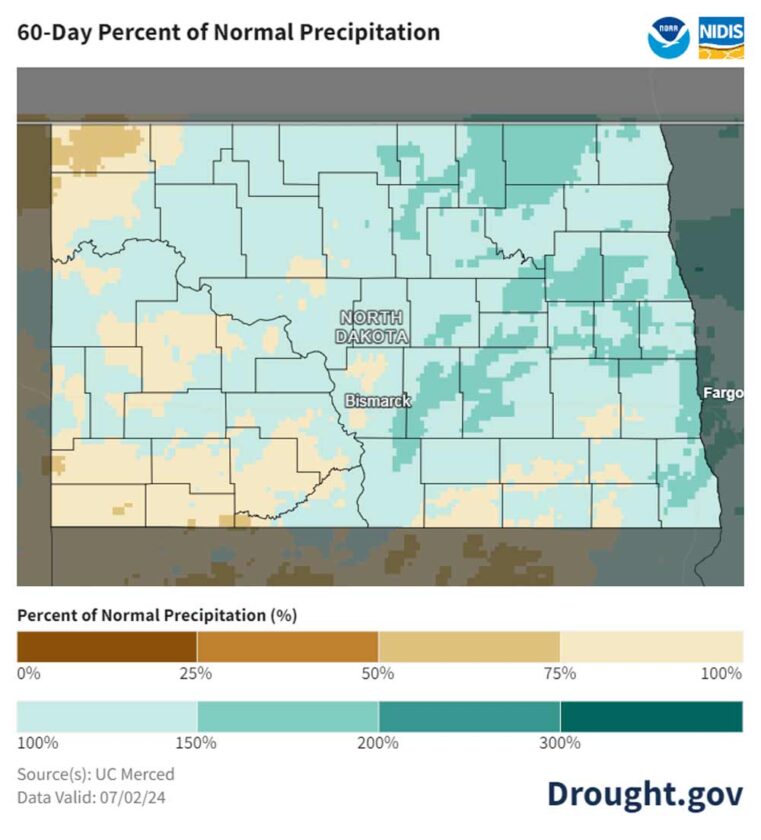Successful spring planting sets stage for harvest

Above average precipitation during the spring and early summer has brought a number of benefits for area producers, diminishing drought concerns but raising the possibility of water- logged soil and other damage to crops from high wind weather events.
Paige Brummund, NDSU Ward County Extension agent, said that while the spring planting season was largely favorable, some producers have had to contend with waterlogged fields in some low lying areas.
“The other trick or challenge we had from this spring is the high winds. Those weeks of really really windy days beat up a lot of our crops. So there’s a lot of fields where literally the plants blew away or were wind whipped and died off,” Brummund said. “There are some bare fields out there that are getting reseeded to another kind of cash crop or hay crop just to cover the soil and provide those health benefits.”
The region hasn’t seen much hail damage during spring, with hail events limited to small amounts of pea-sized hail. However, Brummund said there haven’t been many reports from producers, but it was early in the season and there was still potential for further hail storms in July and August.
“So there’s been some challenges that way, but all in all it’s been an OK spring. If you didn’t have problems with the wind affecting your crops or the low areas flooding out, for the most part things are looking all right. It’s been a really cool spring, so right now what we need is some sunshine and warm temperatures to get our warm season crops going a little faster,” Brummund said.
Precipitation this spring has been above average in Ward County, and Brummund said producers can prepare for excessive moisture and potential flooding through good soil health.
“There’s not a lot to do but hope it doesn’t occur and wait for it to soak in or move on if it does. But by having good soil health, you can hopefully improve your soil moisture holding or retention of that moisture in the soil so less of it will sit on top and more of it will infiltrate down through the soil profile. So incorporating good soil practices is a good recommendation on your farm,” Brummund said.
Brummund said the crop varieties in Ward County are fairly diverse, with small grains dominated by wheat, canola, soy beans, corn, flax, and even peas.
The United States Department of Agriculture Crop report released on June 24 showed North Dakota’s crop, pasture and range and stock water supplies were generally rated good or fair. While a lot can happen down the road as we head toward harvest, Brummund thought the region’s crops have benefited from favorable conditions during planting.
“The good news is that we have had a decent spring so crops were able to get in on time for the most part. We’ve had regular moisture so they could grow and take off. Now we’re just needing that heat and of course continued regular moisture. Not too much and not too little for these crops to reach their yield potential. Then we got to get them off the field, in the bin and get them sold. So there’s a lot of steps to go yet before we really know how the harvest will shake out,” Brummund said.
Cultivating that soil health is different for each operation based on soil types, the equipment they have, and crops they grow. Brummund said a majority of producers in the area utilize no-till techniques which provide favorable conditions for water infiltration. Another factor is ensuring there are living roots in the soil which creates a path for the water to filter down.
“Which is why people that have some bare fields now because the crops died off in the wind or blew away and had some of those issues are going back and looking to reseed those areas so that we don’t have bare soil that’s open to wind erosion or water erosion. Covering that land with a living plant is always a good idea,” Brummund said.


